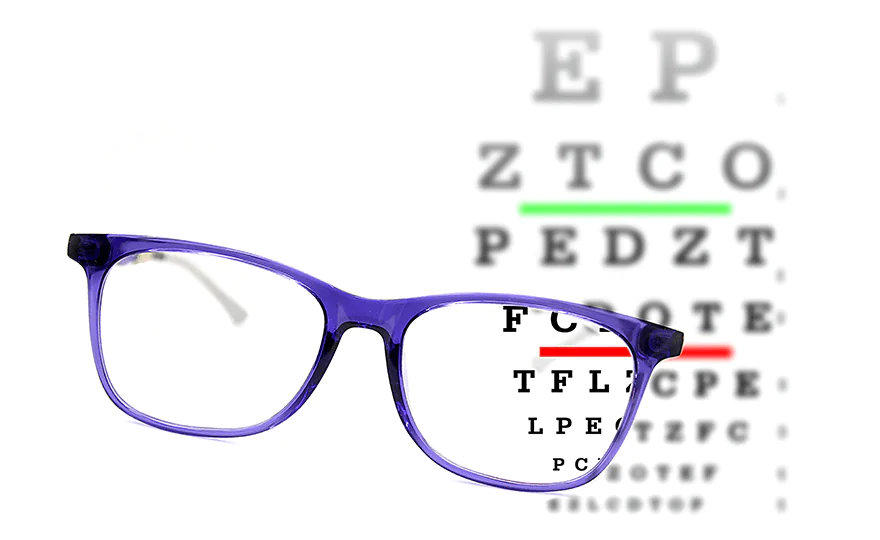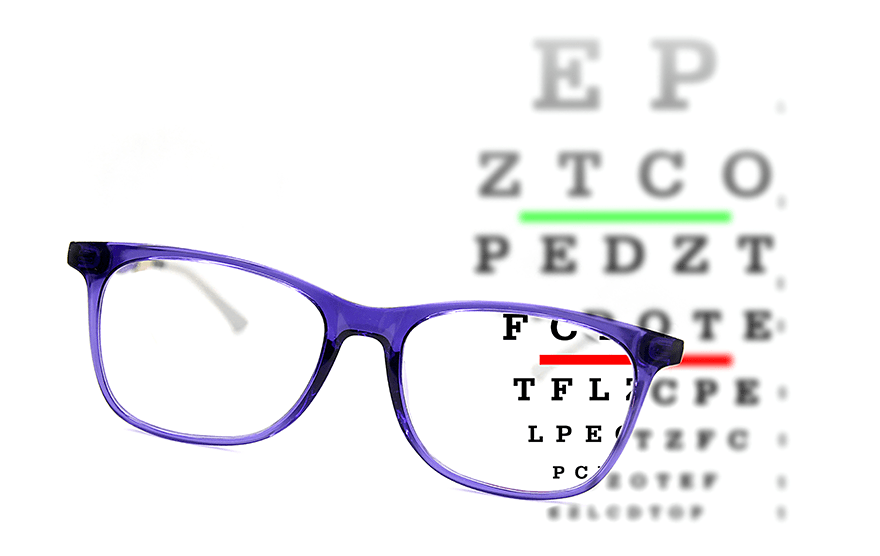
20-20 Vision

Ever heard the term “20/20 vision” and wondered what it really means? Well, it’s basically a way of saying someone has great eyesight. In this blog, we’ll dig deep into what exactly 20/20 vision is, what it says about our eyes, how it gets distorted, how we can achieve it, and do we still need glasses/contacts with 20-20 vision? So, let’s unravel the mystery behind 20-20 vision!
What Does 20-20 Vision Mean?
The clarity and sharpness with which your eyes can see is called Visual Acuity. And having 20-20 vision means that you have normal Visual Acuity. But what do these numbers 20-20 actually represent? The 20/20 vision means the ability to see an object clearly from 20 feet away. Basically, a person with 20-20 vision can see objects 20 feet away with the same clarity as an average person would from the same distance. 20-20 vision is a measurement criterion for visual acuity test.
Defining Visual Acuity
Visual acuity test measures how well we can see details at a certain distance, and the term “20-20 vision” is a way of expressing this measure. It’s a bit like saying someone has perfect eyesight.
Fun fact: Now, you may have heard about 20-20 vision being used around a lot, but it’s not used globally. The 20-20 measurement started in the US as they use feet to measure distance. In the UK and most of Europe, 6-6 vision is used for normal vision. Here, 6 stands for 6 meters because the standard unit for measurement of distance in Europe is in meters, unlike in the US.
How Is 20-20 Vision Tested?
Testing 20-20 vision typically involves using a Snellen eye chart. The person stands 20 feet away, one eye may be covered, and they read rows of standardized letters of decreasing sizes. The results are recorded in a fraction format. If someone has 20/20 vision, they can see at 20 feet what a person with normal vision can see at 20 feet. Other charts and electronic methods may also be used for more detailed assessments by eye care professionals.
Is 20-20 Vision Perfect Vision?
If you wish to boost your 20-20 vision, you might want to reconsider. Here’s why: 20-20 vision is not a perfect vision but is normal or average. People can have better visual acuity than 20-20 & it’s common. Moreover, other factors, such as peripheral vision, depth perception, eye coordination, ability to focus, and color perception, could affect your overall vision.
What Numbers Are Better or Worse Than 20-20?
If someone has 20-30 vision, it means the person can see things clearly from 20 feet away which a normal or average person could from 30 feet. Similarly, a person with 20-15 vision can see things clearly from 20 feet which a normal person would see clearly from 15 feet. So, what normal people would see clearly from a certain distance, someone with 20-15 vision could see clearly from a farther distance.
Now, you might be thinking what’s the best or worst visual acuity in humans? Humans aren’t capable of having it better than 20-10. Talking about the worst visual acuity, it’s a bit complex. People can have bad vision, worst vision, or no vision at all. In technical terms, however, people with 20/200 vision or worse with eyeglasses or contacts are considered legally blind.
Could You Still Need Glasses with 20-20 Vision?
Unless there are other underlying conditions with your eyes, you wouldn’t need eyeglasses or contacts with 20-20 vision. However, with age (after 40 years), you may need reading eyeglasses.
How Common Is 20-20 Vision?
The 20-20 vision, which is considered normal or standard visual acuity, can vary across age groups. It’s worth noting that the chances of having 20-20 vision tends to be higher among children and adults, and it may decrease with age. While 20-20 vision is a common benchmark for good eyesight, people with 20-20 vision may still have other vision issues such as astigmatism, nearsightedness (myopia), or farsightedness (hyperopia). Therefore, regular eye checkups are important for maintaining optimal eye health and detecting any potential vision problems early on.
What Should I Do If My Vision Is Less Than 20-20?
If your vision is less than 20-20 or if you think your visual acuity test results might be less than 20-20, you should see an eye specialist. An eye specialist would be the best person to suggest whether you need eyeglasses, vision therapy, or if you should skip all of it.
If you have vision issues and aren’t able to see near or farther objects clearly and wouldn’t like to have a pair of glasses or contacts to aid your vision, come see us at Planet LASIK. Planet LASIK is the only private center in Delhi offering complete refractive solutions under one roof.
Symptoms and Causes That Lead to Less Than 20-20 Vision
Now that you have understood what is 20-20 vision, let’s see what are the major symptoms of 20-20 Vision:
- Blurred Vision: Objects at a distance may appear blurry.
- Difficulty Focusing: Trouble focusing on close or distant objects.
- Eye Strain: Feeling tired or uncomfortable after extended periods of visual tasks.
- Headaches: Persistent headaches, especially after reading or working on a computer.
- Squinting: The natural response to try and see more clearly.
Below are the major Causes of 20-20 Vision:
- Myopia (Nearsightedness): Difficulty seeing distant objects clearly.
- Hyperopia (Farsightedness): Difficulty seeing close objects clearly.
- Astigmatism: Blurred or distorted vision due to an irregularly shaped cornea or lens.
- Presbyopia: Age-related loss of the eye’s ability to focus on close objects, usually occurring after the age of 40.
- Cataracts: Clouding of the eye’s natural lens, leading to blurry or dim vision.
- Glaucoma: Increased pressure within the eye, damaging the optic nerve and affecting peripheral vision.
- Diabetic Retinopathy: Damage to the blood vessels in the retina due to diabetes, leading to vision impairment.
- Amblyopia (Lazy Eye): Reduced vision in one eye due to abnormal development during childhood.
- Strabismus: Misalignment of the eyes, which can lead to double vision and reduced depth perception.
- Injuries or Trauma: Physical damage to the eyes can result in visual impairment.
How to Maintain 20-20 Vision?
You have now understood what 20-20 vision is but Maintaining 20-20 vision and overall eye health involves a combination of healthy lifestyle practices and regular eye care.
- Regular Eye Check-ups: Schedule routine eye exams for early issue detection.
- Healthy Diet: Eat a balanced diet rich in eye-friendly nutrients.
- Screen Time Breaks: Follow the 20-20-20 rule to reduce digital eye strain.
- Proper Lighting: Ensure well-lit environments to minimize eye strain.
- Stay Active: Regular exercise supports overall eye health.
- Protective Eyewear: Wear appropriate eye protection during sports and risky activities.
- Manage Chronic Conditions: Control diabetes and hypertension for improved eye health.
Regular eye care and a healthy lifestyle contribute to maintaining optimal vision. If issues arise, consult an eye care professional promptly. Check out the list of Best foods to improve eyesight and overall eye health.
20-20 Vision FAQs
-
How is 20-20 vision measured?
20/20 vision can be tested using a Snellen eye chart. With one eye may be covered, a person reads rows of standardized letters of decreasing sizes. The results are recorded in a fraction format.
-
Can your vision be better than 20/20?
20-20 vision is not a perfect vision but is normal or average. People can have better visual acuity than 20-20 & it’s common. You may achieve vision up to 20-10.
-
Why do some people have less than 20/20 vision?
There are multiple reasons like refractive errors, cataracts, glaucoma, and high screen time that may decrease visual acuity.
-
What should I do if my vision is less than 20-20?
First, you must go for an eye check up. Eye specialists at Planet Lasik would be the best person to suggest whether you need eyeglasses, vision therapy, or if you should skip all of it.
-
How can I maintain and improve my vision?
Maintaining 20-20 vision and overall eye health involves a combination of healthy lifestyle practices and regular eye care like regular eye check up, exercise, balanced diet, etc.
